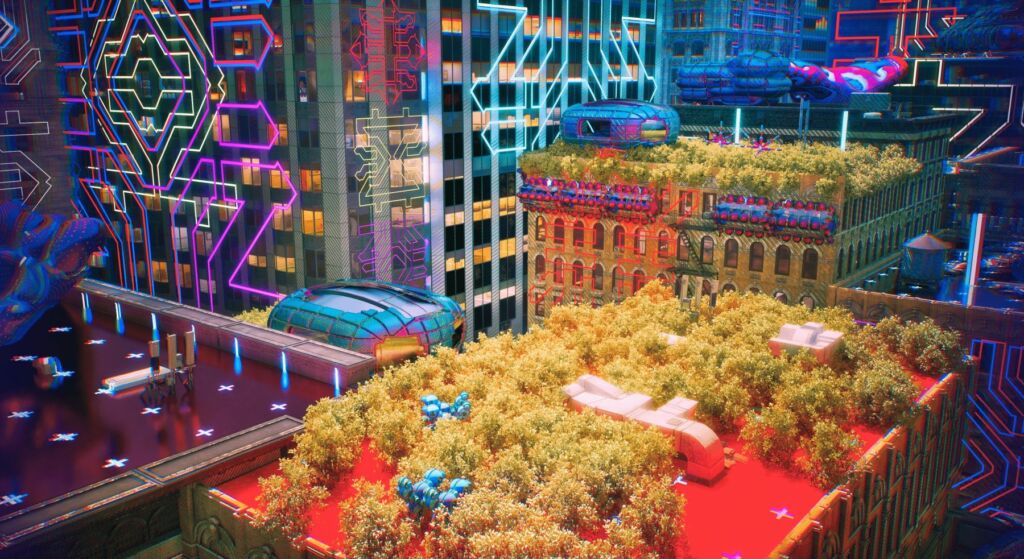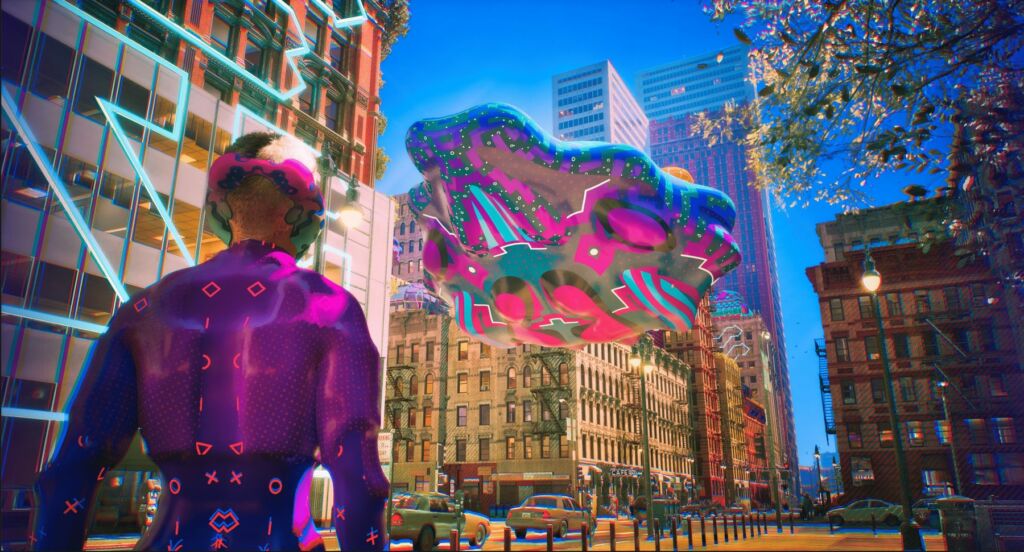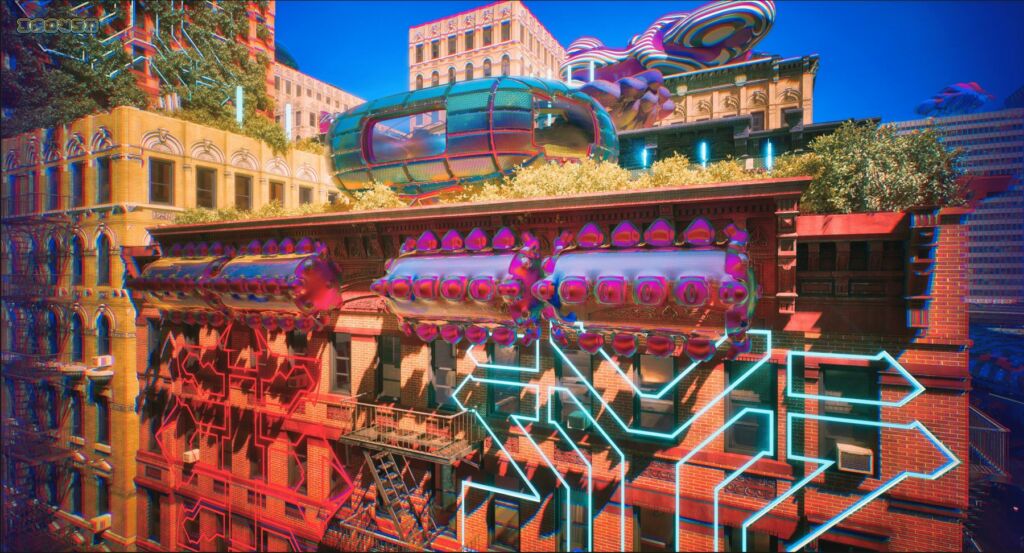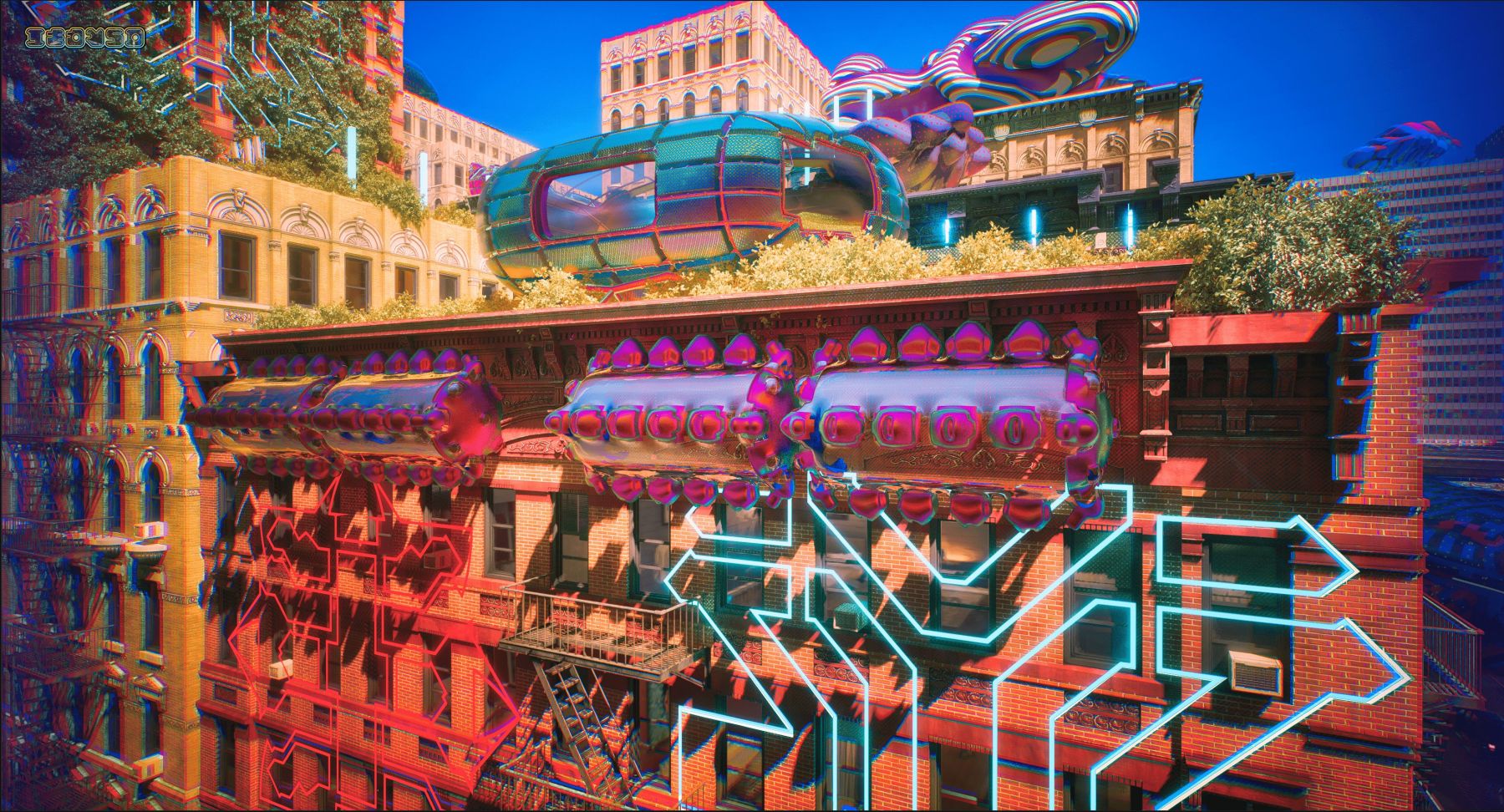Text by Irem Erkin

Discovery: A story about rooftops, airships, robots, and inflatables is an installation recently exhibited at SCI-Arc, by architect, educator, and game designer Damjan Jovanovic in partnership with designer and digital artist Lidija Kljakovic, both co-founders of the LA-based game design studio, Lifeforms.io.
Discovery explores themes of worldmaking, ecology and artificial intelligence which is born from observations of an emerging rooftop culture of urban gardening and alternative lifestyles in downtown LA during the pandemic.
The installation features projections, large-scale inflatables like the blimp (which also serves as a bridge between the digital and physical worlds) and a video game. It has a unique design, with the studio’s impeccable aesthetic inspired conceptually by the great utopian architectural proposals of the 1960s – the work of Superstudio, Archizoom, Haus Rucker Co, and Archigram. On the other hand, visually, the installation feeds from Japanese video games and animation, European graphic novels and the story of the radical environmental hacker collective The Airborne Collective.
Each metaphorical layer of this avant-garde installation is meticulously created to digitally and physically immerse the audience and provoke them to question utopian politics, challenging the standard exhibition logic. In Discovery, Lifeforms.io approaches architectural worldmaking through video games and artificial intelligence, imagining a hopeful and regenerative environment in the near future.
The story of the installation follows an entourage of human and non-human characters, The Airborne Collective, as they build inflatable structures, fly airships, make gardens and generally go about their daily lives on the rooftops of downtown LA, bringing back the sense of community and strength that people can have when they work together on the same goals.
Discovery is a single-player life simulation focusing heavily on player exploration and discovery of the world. The game is open-ended and not goal-based; it is a form of what James Carse called an ‘infinite game’. The player’s main activity is gaining knowledge through exploration, and they can learn about all the world’s components through gameplay. They successfully achieve the audience would have a collective experience of the installation and a multitude of private experiences through gameplay. In this way, the exhibition produces different ideas of time and works through multiple ideas of attention. For example, a visitor can spend 10 minutes in an immersive environment where they are still an observer, or they can become a player and unlock the whole story by spending much more time in the space.




At the game’s core are two entangled dynamic systems of ecology and economy, and they are supported through every in-game object and the world. The systems simulation is at the heart of the world model of Discovery. In their work, Damjan and Lidija think that integrating advanced technology, specifically AI, can enhance and augment the creative process and design.
As they reveal in Discovery, AI application is explored in new territories. Previously they have used AI to design the in-game character personas by giving them intentions, goals and desires, and this form of AI is still present in Discovery. In the last year, they have developed a whole roster of human and non-human characters and objects, and in the game world, all of these are controlled through different behaviours, which is a form of AI.
In Discovery, they have expanded their use of AI to the concept design phase, where they have worked extensively with Stable Diffusion, Midjourney and DALL-E2 to prototype designs and the world. They have also used AI to design the Airborne Collective’s flag, which also became a physical object, a flag placed at the entrance to the gallery space. The Airborne Collective, who are the main protagonists of the game, is a secretive, clandestine group of environmental hackers making an invisible, self-sufficient utopia on the rooftops of LA. They felt that for such a collective, their graphic identity would have to be designed by AI.
Discovery envisions a future in which humans and technology, specifically AI, coexist in harmony and work together. To take care of the planet and emotionally engage the audience with an optimistic future where robots, machines, and habitats can be loved and cared for. This idea, Damjan and Lidija say, gets inspiration from James Lovelock’s proposal of a new genesis, Novacene, in which technology – AI takes care of us and the planet in order to save itself.






